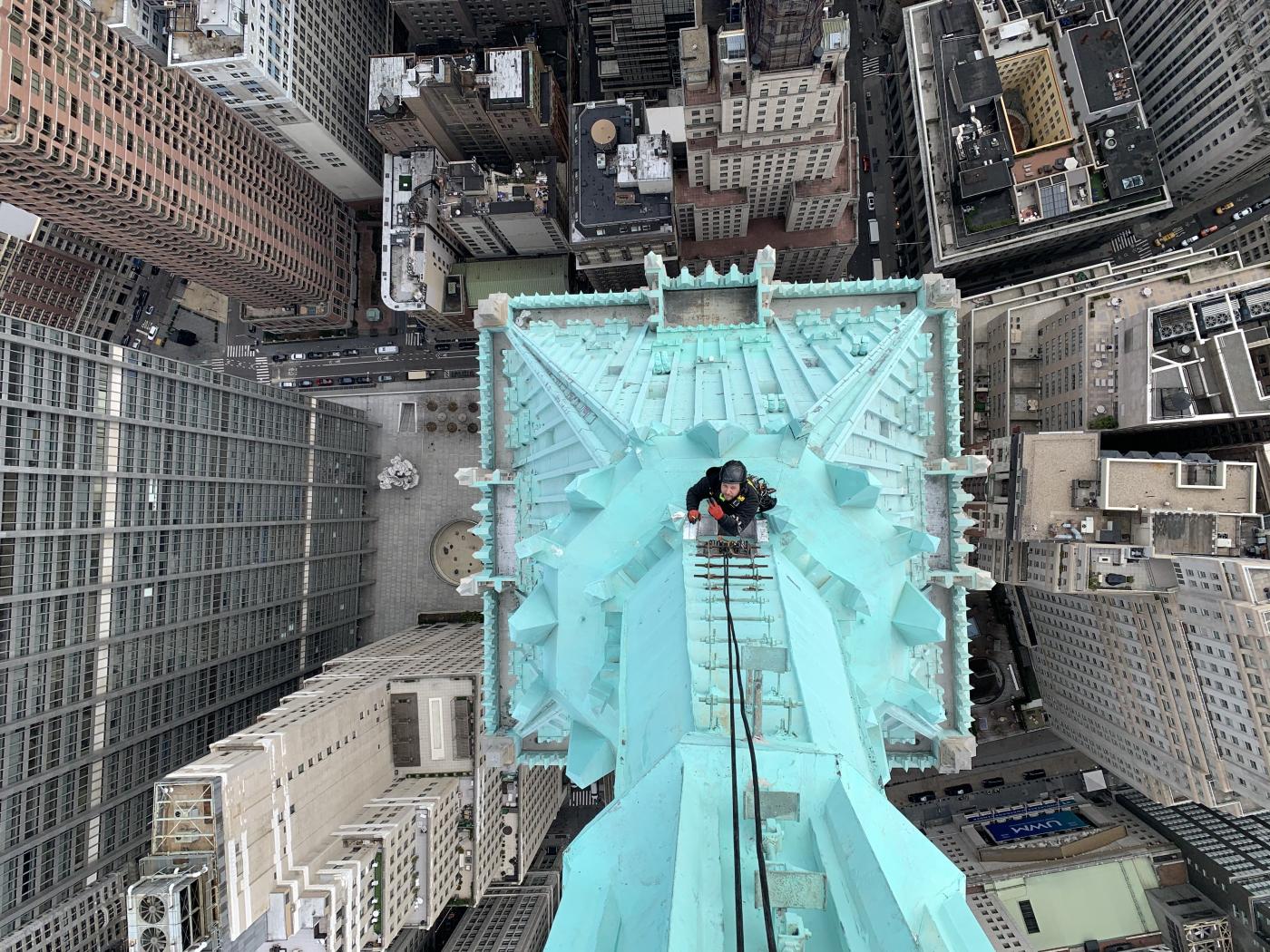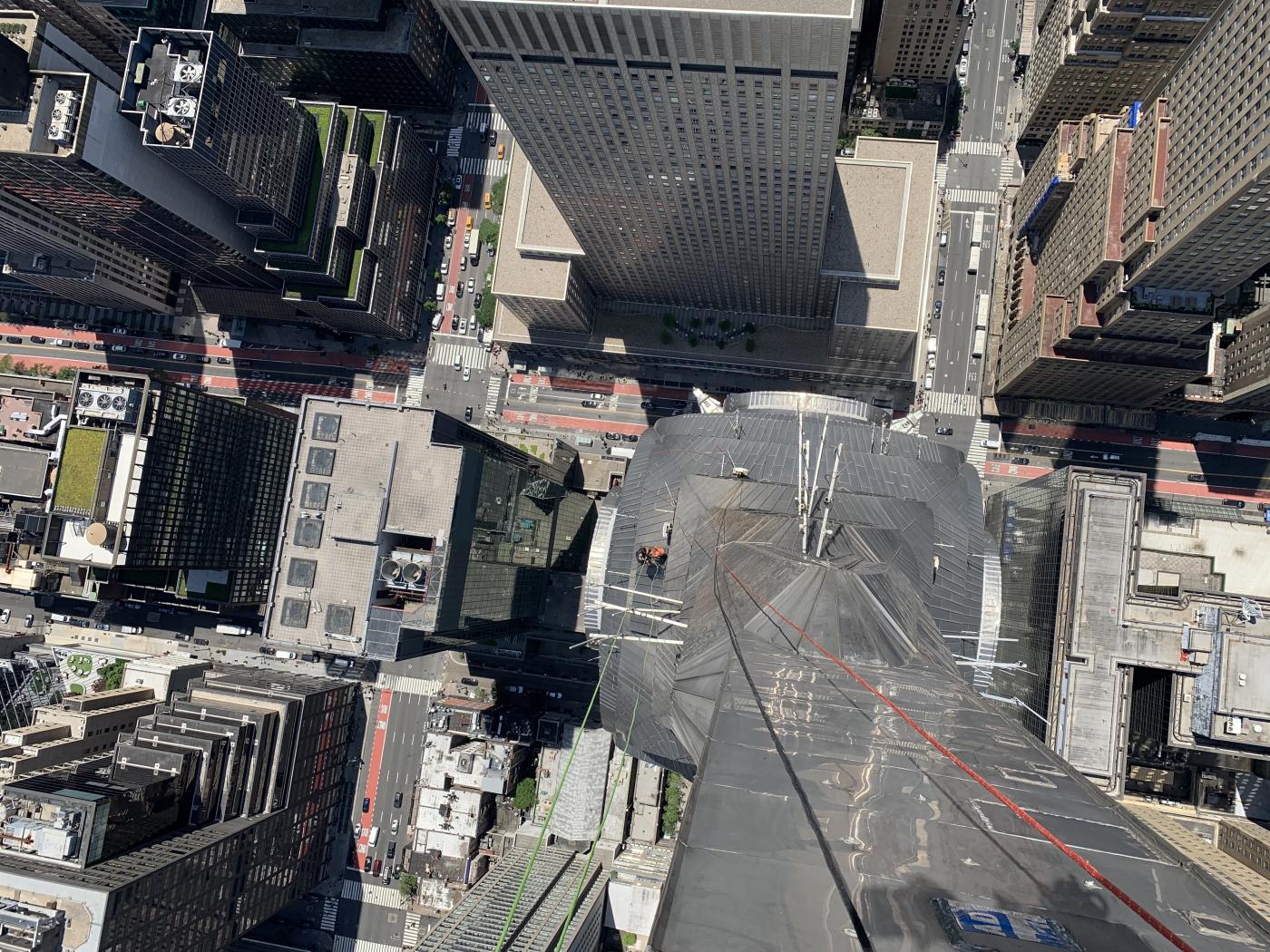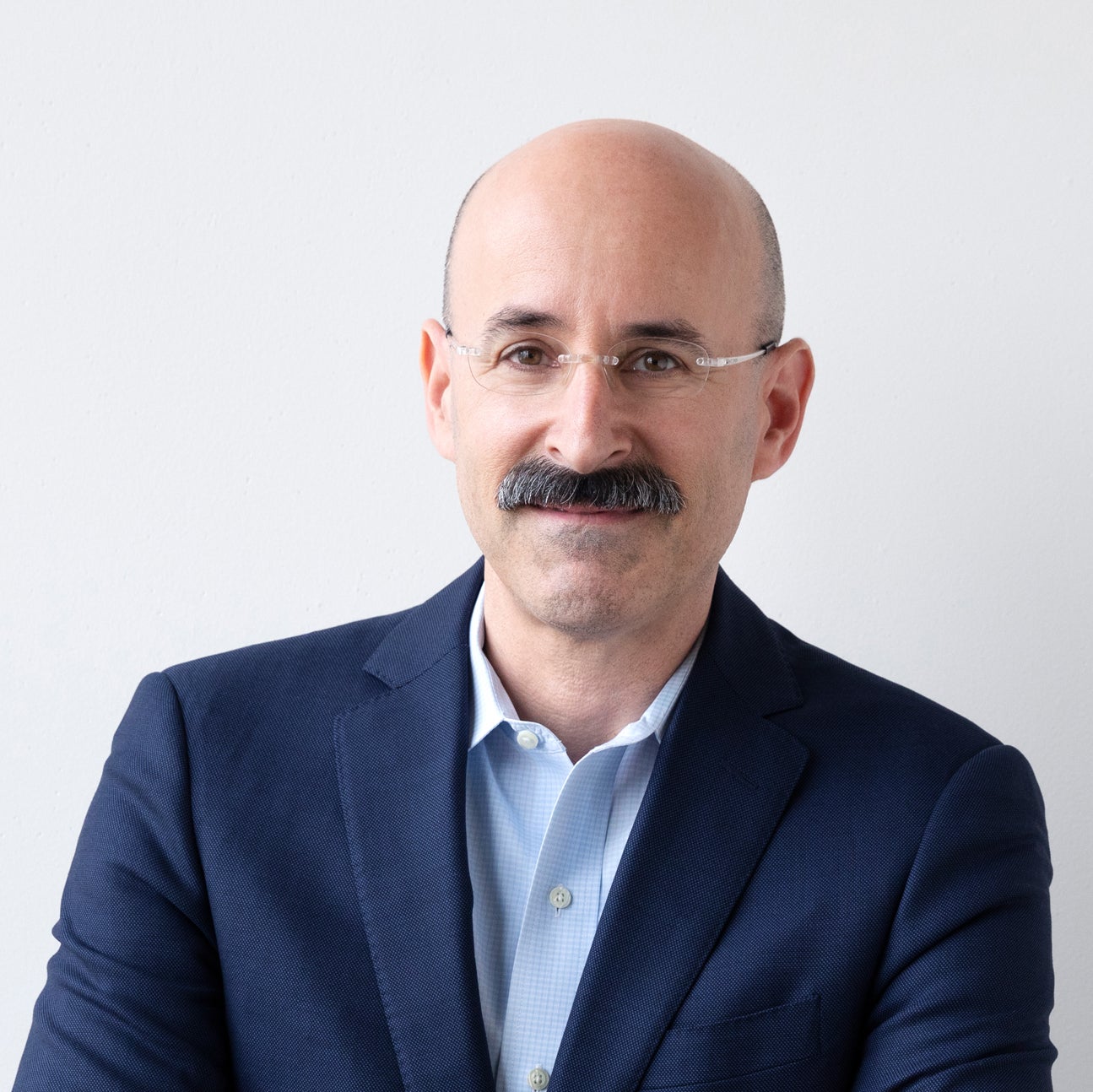
Alum in Action: William Canup on Restoration, Risk, and Reward

William Canup, AIA (BArH '12 + MArH '15)
Restoration Architect, EDG Architecture + Engineering
Alum William Canup (BArH '12 + MArH '15) recently spoke at the UVA School of Architecture alumni panel "Explore Design Futures" about his gravity-defying approach to restoration architecture. We asked Canup, who has been inspecting and restoring the façades of New York's skyscrapers and buildings for nearly a decade, to share more about the risks, rewards, and experience required of his unique career.
Can you describe your role at EDG and a current project you’re working on?
As a restoration architect, I inspect building exteriors across New York City to assess necessary repairs for public safety and historic preservation. NYC mandates façade inspections for buildings over six stories every five years. I often conduct these by rappelling from the rooftops of buildings, using Industrial Rope Access.
I've had the opportunity to hang off the tops of many
iconic New York skyscrapers, including the Empire State Building,
the Chrysler Building, and the Seagram Building.
On days I’m not on rope, I prepare repair details and coordinate with the Landmarks Preservation Commission to ensure restorations align with historic guidelines. I also oversee repair execution and conduct progress inspections, typically from suspended scaffolds.
One project I’m currently involved with is the restoration of the Farmers’ Loan and Trust Company Building, a 1920s Fifth Avenue office tower featuring Art Deco and Gothic elements, including large terra cotta gargoyles. During a rope access inspection, I identified defects necessitating a full façade repair campaign, including replacing several gargoyles. The project is nearing completion and will hopefully ensure the gargoyles will be there to watch over Midtown for another century.
What training and experience are required for scaling and restoring skyscrapers?
To rappel down NYC buildings, I earned certification from the Society of Professional Rope Access Technicians (SPRAT), which involved mastering rope descents, ascents, anchor setups, and rescue procedures.
Initially, going over the edge was nerve-wracking—the hardest moment is letting go of the building and putting full trust in the ropes. However, each rope has a minimum breaking strength equivalent to the weight of a small pickup truck, and we’re always secured to two. Over time, my confidence grew, allowing me to focus on inspections while still appreciating the view.
I still have what I consider a healthy fear of being on rope,
but I'm no longer nervous when going over the edge.
To qualify as a Qualified Exterior Wall Inspector (required for filing façade safety reports in NYC), I needed to be a licensed architect (RA) and have at least seven years of façade repair experience. Restoration work requires understanding historic construction techniques, which vary by era and material. The methods used to repair an Art Deco office tower are very different from those used for a 1960s apartment building. I needed to learn to "read" a building to keep an eye out for possible modifications done with different materials and techniques over the years. My architectural history courses at UVA laid the foundation for this work.
|
Image

|
Image

|
| Gargoyles on the Farmers' Loan and Trust Company Building being inspected from rope. (left) Photo: William Canup. William Canup hanging from the Empire State Building (right). Courtesy of William Canup. | |
The most rewarding moment of your career was…
Becoming a registered architect. My background in architectural history made my path to licensure unconventional, but after moving to NYC, I discovered that experience-based licensure was an option. After accumulating five years of experience, I qualified for the ARE exams. Four years later, I completed the required hours for licensure. It was a long journey, but deeply fulfilling. I still have much of my career ahead, so I hope to have an even better answer in the future.
How did your experiences teaching and working abroad shape your understanding of historic preservation?
While working as a teaching assistant for UVA’s Venice program in 2014, I attended a restoration techniques course at IUAV (Istituto Universitario di Architettura di Venezia, University of Venice), which provided in-depth insights into preserving historic materials. Later, in 2017, I participated in an ICOMOS (International Council on Monuments and Sites) exchange program in Lithuania, working with a state-funded preservation organization restoring historic structures.
More than specific techniques, these experiences highlighted how central preservation is to architectural education in Europe. In Italy and Lithuania, restoration coursework is foundational, whereas in the U.S., it’s often seen as a niche field. However, as more buildings age and the value of embodied energy in existing structures gains recognition, preservation skills will become increasingly vital for American architects.
What lasting lessons from your A-School education influence your work today?
The connections I made with faculty and peers have been invaluable. My professors encouraged me to pursue internships and projects that broadened my experience. UVA instilled in me the mindset that opportunities exist if you seek them out—a philosophy that continues to guide me. The A-School fosters curiosity and initiative, qualities that have shaped my career and led me to some incredible places.



